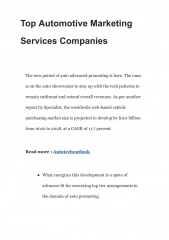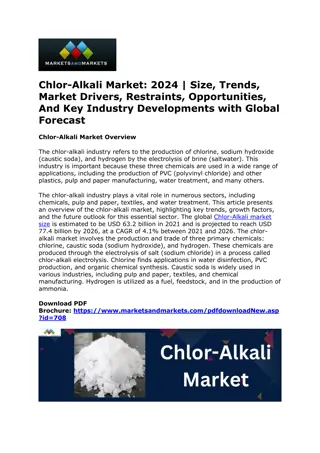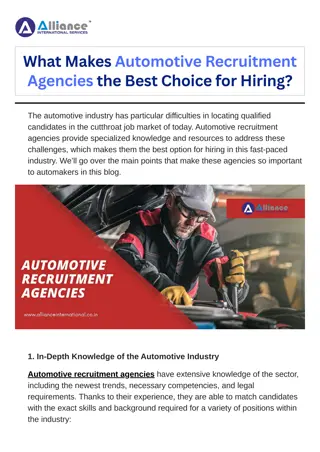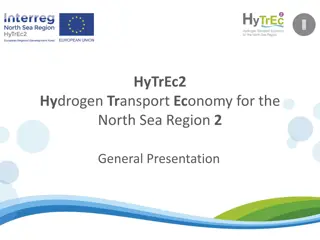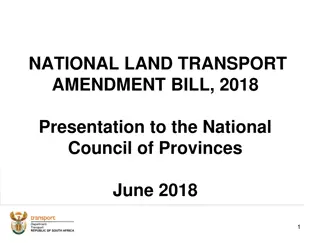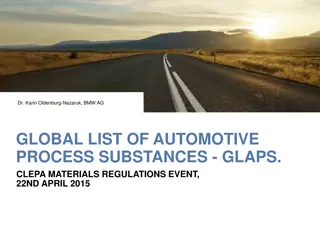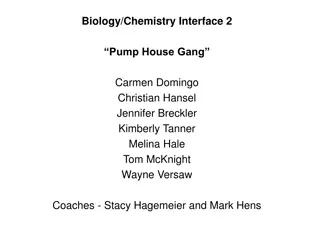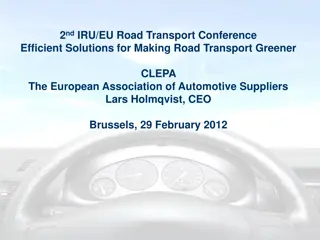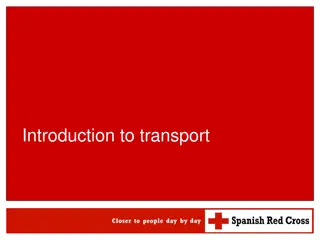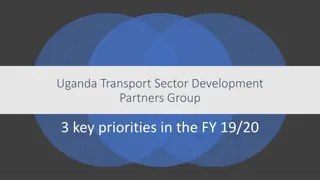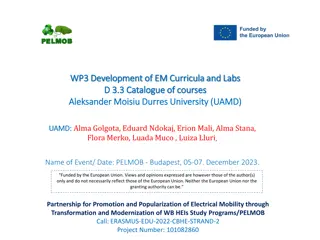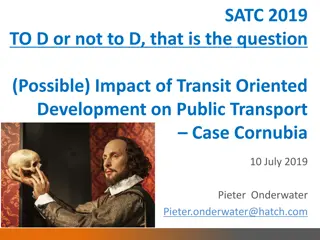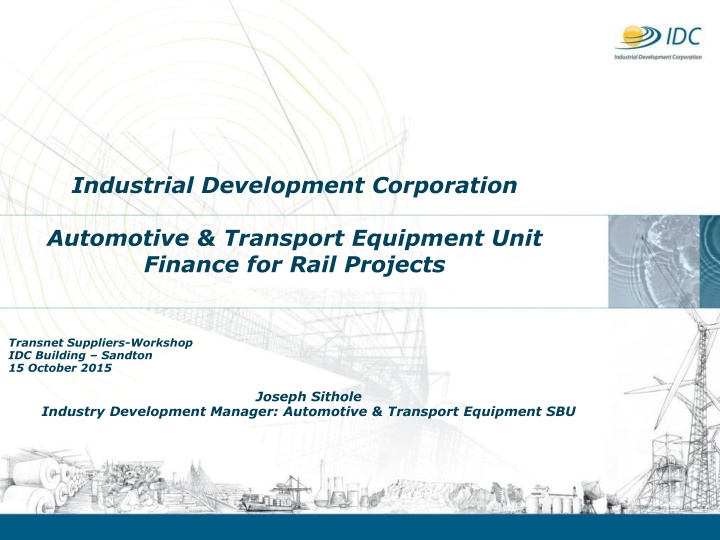
Industrial Development Corporation Automotive & Transport Equipment Unit
Discover the sectors supported by the IDC, focus areas, and funding opportunities in the automotive and transport equipment industry, aiming to drive local manufacturing and global competitiveness by 2025.
Download Presentation

Please find below an Image/Link to download the presentation.
The content on the website is provided AS IS for your information and personal use only. It may not be sold, licensed, or shared on other websites without obtaining consent from the author. If you encounter any issues during the download, it is possible that the publisher has removed the file from their server.
You are allowed to download the files provided on this website for personal or commercial use, subject to the condition that they are used lawfully. All files are the property of their respective owners.
The content on the website is provided AS IS for your information and personal use only. It may not be sold, licensed, or shared on other websites without obtaining consent from the author.
E N D
Presentation Transcript
Industrial Development Corporation Automotive & Transport Equipment Unit Finance for Rail Projects Transnet Suppliers-Workshop IDC Building Sandton 15 October 2015 Joseph Sithole Industry Development Manager: Automotive & Transport Equipment SBU DRAFT
Sectors supported by the IDC Chemicals and Textiles Metals Basic and Speciality Chemicals Chemical products and Pharmaceuticals Clothing and Textiles Basic Metals and Mining Machinery and Equipment Automotive and Transport Equipment Value Chains Agro-Processing Agro-Processing and Agriculture New Industries Industrial Infrastructure 2
Our focus areas Control or >50% shares Strategic leadership Operational involvement Black industrialist Youth owned 25% plus owned Jobs created Jobs saved Job creation IDC focus Government procurement Inputs into infrastructure Women owned 25% plus owned Localisation 3
Automotive & Transport Equipment SBU: What do we fund? Rail Automotive Ships Aeronautics Manufacturing of railway locomotives & rolling stock Manufacturing of aircraft and space craft Manufacturing of motor cycles Building and repair of ships Building and repair of pleasure / sporting boats Maintenance & Refurbishment of locomotives & rolling stock Manufacturing of Motor vehicles Manufacturing of Components Manufacturing of Components 4
Our planned impact Automotive and transport equipment A competitive local automotive and transportation industry that manufactures and/or assembles a significant portion of automotive and transportation equipment in SA for the domestic and export market, and is a key global player for select components ment goal Industry develop- Impact Improved trade balance Increase GDP GDP Growth: Motor Vehicles and Transport Equipment Trade balance: Motor vehicles and Transport Equipment (average per year) 6.5% 6.5% 0 0 5.9% History 6.0% 6.0% -20 000 -20 000 Baseline forecast 5.5% 5.5% 5.1% Target forecast -40 000 -40 000 5.0% 5.0% Avg. Annual Growth (%) Avg. Annual Growth (%) 4.5% 4.5% -60 000 -60 000 3.8% 4.0% 4.0% -80 000 -80 000 3.5% 3.5% R'm R'm -100 000 -100 000 3.0% 3.0% -120 000 -120 000 2.5% 2.5% 2.0% 2.0% 1.6% -140 000 -140 000 1.5% 1.5% 1.5% -160 000 -160 000 1.0% 1.0% -180 000 -180 000 0.5% 0.5% 0.0% 0.0% -200 000 -200 000 2000 to 2004 2005 to 2009 2010 to 2014 2015 to 2025 2000 to 2004 2005 to 2009 2010 to 2014 2025 Planned impact on GDP in Automotive and equipment by 2025: Planned impact on trade by 2025: R4.9 billion increase in value add (at 2010 prices) compared to baseline 8.7% Targeted value add in excess of baseline forecast (2014-2025) R15.2 billion improvement in trade balance compared to baseline 18% improvement in trade balance compared to baseline 5
Our planned impact Automotive and transport equipment (2) A competitive local automotive and transportation industry that manufactures and/or assembles a significant portion of automotive and transportation equipment in SA for the domestic and export market, and is a key global player for select components ment goal Industry develop- Impact Increased levels of employment Employment: Motor vehicles and transport equipment 140 140 136 History Baseline forecast 130 130 124 Target forecast 120 120 120 Number (thousands) Number (thousands) 111 110 110 102 100 100 90 90 80 80 70 70 60 60 End-2004 End-2009 End-2014 End-2025 Planned impact on employment in metal products by 2025: 15 500 more people employed in target compared to baseline 13% more people employed in target compared to baseline 6
Our Strategy towards developing the Rolling Stock Industry Getting in early participating in early stage feasibility funding in support of rail and rolling stock projects in the continent. Regional Integration promoting the integration of the SA rail industry into the Rest of Africa to create export opportunities for South Africa s railway goods. Influencing Government Policies - promote policies that deepen industrialisation such as localisation, preferential designation etc. Supporting and developing a strong competitive supplier base - providing competitive and tailor made funding packages to 1st and lower tier component suppliers. Co-operation with key industry stakeholders cooperation agreements with the OEMs, Rail Operators and other industry players on the continent in support of their investment plans. 1 2 3 procurement, sector- 4 5 7
Funding products and criteria PRODUCTS CRITERIA Debt Own contribution Economic Merit Equity No refinancing Quasi-equity BEE R1 mil R1,5 bill Guarantees Security Trade Finance Start-up and existing 8
Financing criteria Financial assistance is provided for the development of new businesses, expansions or rehabilitation of existing businesses Business case must exhibit economic merit (i.e. it must be profitable) IDC finances fixed assets and fixed portion of growth in working capital requirements Reasonable contribution expected from promoter/s Minimum of R1 million Reasonable level of Security Environmental compliance https://encrypted-tbn2.gstatic.com/images?q=tbn:ANd9GcTk4Tm5dy6bYQgo6XCceq6TD2zDpl2gSB-r_S96NJRS3MbA6v_B78oiIx0 https://encrypted-tbn1.gstatic.com/images?q=tbn:ANd9GcRfIkbm5EtaBDyBE8qVPJBa29TbYTrKF5nnxuiHeHecI_lrZM5whHb7JmY https://encrypted-tbn2.gstatic.com/images?q=tbn:ANd9GcR1P7A_U40v-Ir1n4L2U2G26fy8qX0nUtCWbec1aXdwobnGpgg2eFx0A1fQ 9
IDC products and services General industrial finance: Equity Quasi-equity Commercial debt Export/import finance Short-term trade finance Bridging finance Guarantees Venture capital Wholesale funding through intermediaries Finance is structured according to client s needs can include moratoria on repayments to enable business growth Special purpose finance: Transformation and Entrepreneurial Scheme (TES) (R1 billion) Risk Capital Facility (RCF) ( 55 million) Isivande Women s Fund (R50 million) Support Programme for Industrial Innovation (SPII) (R75 million/year) Distressed funding (R6.1 billion) Cross sectoral schemes/funds 10
Typical Funding Instruments WorkingCapital Project & Corporate Finance Revolving Credit Facility Greenfield/start-ups and brownfield/expansion projects Pre-shipment Export Finance Plant & Equipment Finance Post-shipment Export Finance Land and Building Finance Short term Bridging Finance (contract/order/tender) Building Construction Finance Guarantees Equity Bid bonds/ tender Guarantees Ordinary shares/ direct shareholding Performance Guarantees Change in Shareholding BBB-EE, Workers, Community Trusts Advance Payment Guarantees Preference Shares Financial Guarantees Quasi Equity Loans Credit Replacement Guarantees Shareholder Loans 11
Funding model What makes our funding structure so unique Product offering IDC puts together the most appropriate financial package for the client, taking into account the IDC guidelines and the client s requirements by means of, among others: Capital and interest moratorium: IDC will allow start-up business or expansion of existing businesses a grace period during which capital is not payable, generally one year, but can be up to 5 years e.g. pro- orchards scheme . In certain instances, even interest payments are capitalised for an average period of 18 months Terms of loans : IDC matches the repayment term of the loan with the cash flow generated by the asset acquired or expense incurred. Average term of loans is between 3 and 7 years, but can be up to 15 years (e.g. pro-orchard scheme) or even 25 years (pro-forestry scheme) Equity investments: In certain instances, mostly new projects IDC will share the responsibility for a venture by taking up equity in the business to ensure that it is adequately financed. IDC does not normally seek control in an undertaking but determines the level of participation on an individual basis. It is the IDC's policy to provide the entrepreneur with a buy back option on a mutually acceptable commercial basis. 12
Funding schemes The IDC plays a crucial role in growing the economy and creating jobs. With this in mind, the IDC is investing R10 billion through its Gro-E Scheme 13
Gro-E Scheme Max cost per job of R500 000 Operating / expanding in SA BBBEE certification Loans at prime 3% Up to 5 years 14
Manufacturing Competitiveness Enhancement Scheme Confirmed contract or purchasing order; OR Order related to state-owned competitiveness suppliers programme, OR product is part of the designated products value chain SA entity with existing manufacturing operations Qualify for MCEP Loans Incentives Working capital loan Up to R50 million 4 year term Interest at 4% fixed on 50% of loan 15
Funding model What makes our funding structure so unique Own unencumbered cash contribution: Is determined based on shareholding, capacity to invest, size and assessed risk of the venture and it may be as a low as 2.5% of the transaction value for the BBBEE component of an acquisition transaction Is required from clients to demonstrate commitment to project or venture Pricing and fees: Pricing is based on risk and discounted for development impact (i.e. the higher the developmental impact the lower the price would be). The IDC s fees are generally lower than those of other financial institutions (commitment fee an drawing fee, no fee charged for investigation 16
Funding model (cont.) What makes our funding structure so unique Cash flow: The IDC considers the cash flow of a company and the financial forecasts to demonstrate economic viability and profitability within a reasonable period and sufficient cash flows to repay the investment over a reasonable period of time The cash flows are often weak due to start-up nature of most of the projects Capital security (collateral): Is generally low in comparison with other financial institutions Lack of security does not preclude approval Security by way of underlying assets and/or sureties may be required with the exception of non-profit entities such as workers trust 17
Funding model (cont.) What makes our funding structure so unique Business Support Business support to entrepreneurs: IDC Business Support Programme was established to assist where appropriate: Potential clients in preparing a business plan Existing clients where e.g. shortcomings in the management capacity has been identified, if a short-term intervention is required, if it experiences financial difficulties The funding for the business support is born partly by IDC Approach to entrepreneurial development Business support Funding Training Entrepreneurial Development Training IDC offers and sponsors customized demand driven courses to empower current and prospective clients The courses are aimed at prospective and current clients. Examples of courses offered: Basic Business Skills for SMEs Monitoring developmental impact and financial performance 18
Pre and post investment process Project appraisal process Applications from existing / prospective businesses Proactive identification & development of business opportunities Consultation / interactions with expert departments Structuring of funding depending on client s needs. Initial Screening & Basic Assessment Feasibility Completed Feasibility not fully investigated Term Sheet MOU/Co-operation Agreement Vanilla transaction 4 Equity transaction 8 Average turnaround Due Diligence Feasibility Study weeks weeks times: Proposal Submission Interventions in businesses including business support, restructuring of facilities, experiencing difficulties, Approval of viable transactions at an appropriate committee Legal Agreements Disbursement etc. Post Investment Management 19
Conclusion - Leverage South Africas Strengths A number of the worlds major rolling stock OEMs including GE, South China Rail, North China Rail, Alstom and Bombardier are all participating in South Africa s rail and rolling stock investment programme bringing foreign technology and expertise into the South African industry. South Africa s deep commercial capital markets and development finance institutions are uniquely positioned to support and co-invest with like minded parties in the African freight growth story. South African public and commercial funders already offer tailor made financing solutions to rail utilities and industry on the continent including amongst other rolling stock leasing, take-or-pay agreements and network operating. 20
Conclusion - Leverage South Africas Strengths South Africa is the continent s leading rail country in terms of both freight and passenger rail infrastructure, as well as rolling stock assets. The South African rail sector has developed capabilities, skills and expertise as manufacturer, assembler and supplier of rail infrastructure, rolling stock and components, including the refurbishment and rejuvenation of aged rail and rolling stock infrastructure and components. South Africa s own substantial investments in its freight and passenger rail and rolling stock infrastructure over the next decade will further strengthen and deepen its participation in important aspects of the rail industry value chain. 21
How to apply Submit your business plan Make an enquiry Online IDC Direct Contact your nearest regional office Call Centre 0860 693 888 Call Centre 0860 693 888 Email Email callcentre@idc.co.za callcentre@idc.co.za 22
Thank you DRAFT

